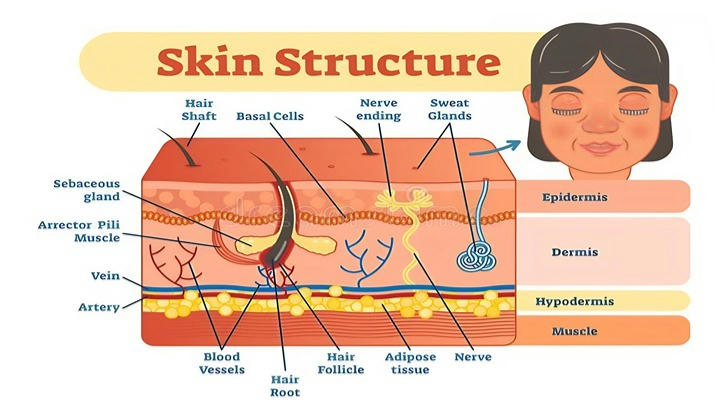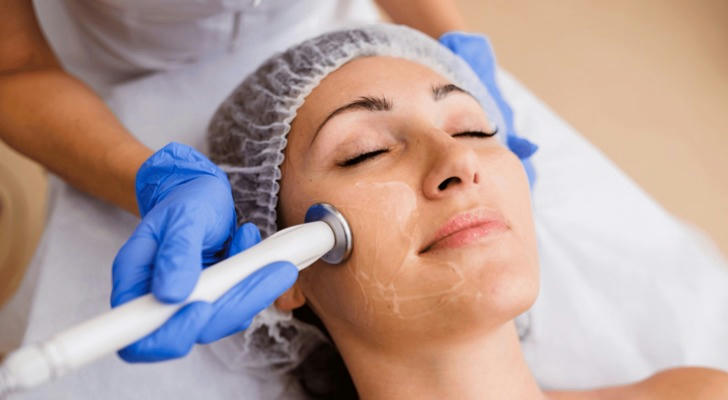Getting Started with Skin Care: A Must-Have Guide for Beginners
Skin care is an important branch of the modern beauty industry. It not only includes basic skin care, but also covers more professional skin care techniques. For beginners, understanding the basics of skin care is the first step towards becoming a professional beautician. This article will provide you with a comprehensive guide to getting started quickly and mastering the basic skills of skin care.

I. Basics of Skin Care
1.Structure and Function of Skin
The skin is the largest organ in the human body and is mainly composed of the epidermis, dermis and subcutaneous tissue. The epidermis is the outermost layer of the skin and is responsible for protecting the body from external damage; the dermis contains collagen and elastic fibers, which give the skin elasticity and strength; and the subcutaneous tissue provides buffering and insulation functions. Understanding the structure of the skin will help to better manage the skin.
2.Common Skin Problems
Common skin problems include acne, spots, wrinkles, sensitivity and dryness. The formation of these problems is related to many factors, such as genetics, environment, lifestyle, etc. The goal of skin care is to improve these problems and restore the skin to a healthy state through professional care methods.
II. Basic process of skin care
1.Cleansing
Cleaning is the first and most important step in skin care. Use a mild cleansing product to remove dirt, oil and makeup residue on the skin surface. It is recommended to clean every morning and evening, and choose a cleansing product suitable for your skin type.
2.Exfoliation
Regularly removing dead skin cells on the skin surface can promote skin metabolism and make the skin smoother and more delicate. It is recommended to perform exfoliation care once a week, using a mild exfoliating product to avoid over-irritating the skin.

3.Moisturizing
Moisturizing is a key link in skin care. Use moisturizing products such as lotions, creams or essences to replenish moisture and nutrients to the skin. It is recommended to choose products containing moisturizing ingredients such as hyaluronic acid and glycerin, and adjust the amount of moisturizing products used according to the season and skin type.
4.Sunscreen
Ultraviolet rays are one of the main causes of skin aging and pigmentation. Therefore, sun protection is an indispensable part of skin care. It is recommended to use a broad-spectrum sunscreen with an SPF value of at least 30 every day and reapply every two hours. In addition, wearing a wide-brimmed hat and sunglasses can further protect the skin from UV damage.
III. Tools and products for skin management
1.Basic tools
Skin management requires some basic tools, such as cleansing brushes, cotton pads, mask brushes, etc. These tools can help you perform skin care more effectively and improve the effect of care.
2.Skin care products
Choosing skin care products suitable for your skin type is the key to skin management. Common skin care products include cleansing products, toners, lotions, creams, essences, and sunscreens. It is recommended to choose the right products according to your skin type and needs.
IV. Common misunderstandings of skin management
1.Over-cleansing
Over-cleansing can damage the skin barrier and make the skin more sensitive. It is recommended to perform gentle cleansing every morning and evening, and avoid using overly irritating cleansing products.
2.Ignoring sun protection
Many people ignore the importance of sun protection and think that sunscreen is only needed in summer or outdoor activities. In fact, UV damage to the skin is long-term cumulative, so it is recommended to use sunscreen every day, regardless of the weather.
3.Exfoliate irregularly
Regular exfoliation can promote skin metabolism, but many people ignore this important step. It is recommended to perform exfoliation care once a week, use gentle exfoliating products, and avoid over-irritating the skin.

Skin management is a systematic process that requires comprehensive consideration of the structure, function, and common problems of the skin. By mastering the basic knowledge and basic processes of skin management, choosing the right tools and products, and avoiding common misunderstandings, you can better protect your skin and delay skin aging. I hope this article can provide you with valuable guidance to help you get started quickly and master the basic skills of skin management.
